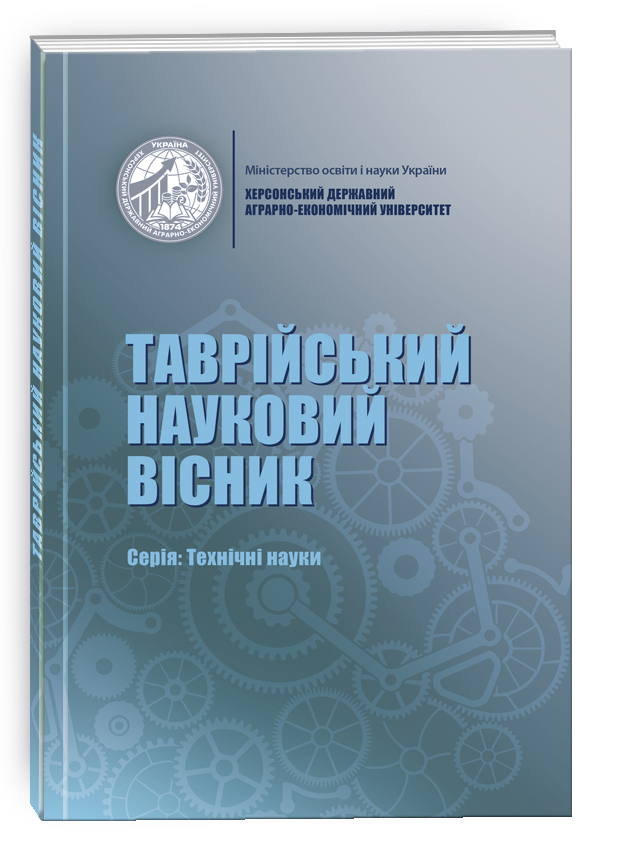ORGANIZATION AND TECHNOLOGY OF PRODUCTION OF SEMI-FINISHED FLOUR FOR SPECIAL PURPOSES FOR RESTAURANT ESTABLISHMENTS
DOI:
https://doi.org/10.32782/tnv-tech.2024.5.23Keywords:
flour confectionery semi-finished product, rice flour, almond flour, agave syrup, erythritol, ingredients of vegetable origin, technology, formulation, nutritional valueAbstract
The paper contains theoretical and experimental research on the development of specialpurpose flour confectionery semi-finished products. As a result of the conducted literature review, the relevance and expediency of expanding the range of allergen-free products on the Ukrainian market, in particular gluten-free, lactose-free, without ingredients of animal origin, etc., was confirmed. The possibility of completely replacing wheat flour with a mixture of rice and almond flour was established, and alternative sources of replacing raw materials of animal origin with plant ingredients were selected. The recipe composition of the innovative experimental sample of the semi-finished product contained the following ingredients: refined sunflower oil, erythritol, a mixture of rice and almond flour, agave syrup, baking powder and almond drink. Based on the obtained data, the optimal ratio of rice and almond flour for the recipe was determined. The replacement of wheat flour with a mixture of rice and almond flour made it possible to obtain a gluten-free semi-finished product, and the replacement of eggs with refined sunflower oil and sugar with erythritol and agave syrup made it possible to expand the range of special purpose products and obtain confectionery products available to a larger population. Based on the tasting evaluation of the obtained semi-finished flour product, it was established that the obtained sample has high organoleptic indicators: light brown color, lush, porous and elastic pulp structure, pleasant aroma and taste with nutty notes, well-developed porosity. The moisture content of the semi-finished product is 31.7%. The nutritional and energy value per 100 g of the finished semi-finished product is: proteins – 9.4 g; fats – 33.7 g; carbohydrates – 30.1 g and 455.1 kcal.
References
Попова Н.В., Ковальов С.В., Козаков Г.П., Степанова С.І., Алфьорова Д.А., Грудько І.А. :Тексти лекцій з нутриціології: Х. : Вид-во НФаУ, 2016. 153 с.
Що таке харчова алергія? Delta Med. Delta Med. URL: https://delta-med.com.ua/shho-take-harchova-alergiya/ (дата звернення: 10.11.2024).
Вікові та клініко-патогенетичні особливості харчової алергії у дітей: підходи до лікування та профілактики. Здоров’я України | Інформація для спеціалістів охорони здоров’я Health-ua. URL: http://surl.li/atuhjl (дата звернення: 10.11.2024).
Chumak I. V. OCCIDENTIAL TRENDS FOR THE DEVELOPMENT OF FOOD INNOVATIONS IN THE CONTEXT OF UKRAINIAN AND WORLD STATE-BUILDING. "Scientific Notes of Taurida V.I. Vernadsky University", series "Public Administration". 2022. № 1. С. 11–18. URL: https://doi.org/10.32838/tnu-2663-6468/2022.1/03 (дата звернення: 10.11.2024).
Павлюченко, О. С., Польовик, В. В., Новаторська, М. О. Печиво пісочне спеціального призначення на основі рослинної сировини. Таврійський науковий вісник. Серія: Технічні науки (6). 2024. С. 147-158. https://doi.org/10.32782/tnv-tech.2023.6.17
Євлаш В.В., Газзаві-Рогозіна Л. В., Сєногонова Л. І. Удосконалення технології печива пісочного з використанням лляного борошна. Прогресивні техніка та технології харчових виробництв, ресторанного господарства і торгівлі : збірник наук. пр. Харків 2021 : ХДУХТ, Вип. 1 (33) (тех). С. 187–198.
Погорельська А. С., Павлюченко О. С., Кузьмін О. В., Польовик В. В., Силка І. М. Теоретичні аспекти доцільності створення безглютенових кексів збагачених сиром кисломолочним, для закладів ресторанного господарства. Наукові праці НУХТ, 2023. Том 29, № 1. С. 151–163.
Юдіна, Т., Безрученко, О., Павлюченко, О. Обгрунтування складу борошняної сировини у технології безглютенових кексів. Праці Таврійського державного агротехнологічного університету. 2019. Т. 1, № 19. С. 179–186. https://doi.org/10.31388/10.31388/2078-0877
І. М. Медвідь / Удосконалення технології хліба спеціального дієтичного призначення: дис. ... д-ра філос. : 181 "Харчові технології" /; Нац. ун-т харч. технол. Київ, 2020. 317 с.
Yıldız Е. (2021). Use of almond flour and stevia in rice-based gluten-free cookie production. Journal of Food Science and Technology, 58(3), 940 – 951. DOI: 10.1007/s13197-020-04608-x
Mykhaylov, V., Samokhvalova, O., Kucheruk, Z., Kasabova, K., Simakova, O., Goriainova, I., Rogovaya, A., & Choni, I. (2019). Influence of microbial polysaccharides on the formation of structure of protein-free and gluten-free flour-based products. Eastern-European Journal of Enterprise Technologies, 6(11 (102), 23–32. https://doi.org/10.15587/1729-4061.2019.184464
Прохоренко Д.М., Машовець М.Ю., Павлюченко О.С. Борошняний напівфабрикат для тортів і тістечок закладів ресторанного господарства. XІІІ Всеукраїнської науково-практичної конференції з міжнародною участю «Інноваційні технології в готельно-ресторанному та туристичному бізнесі», присвяченої 140-річчю НУХТ, 21 травня 2024 р. К.:НУХТ, 2024 р. 267 с.







